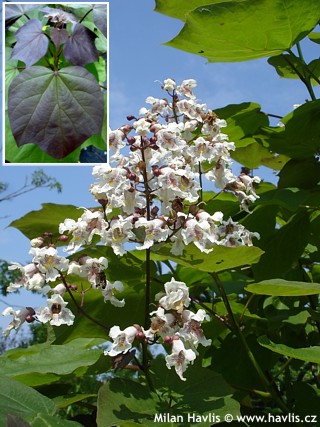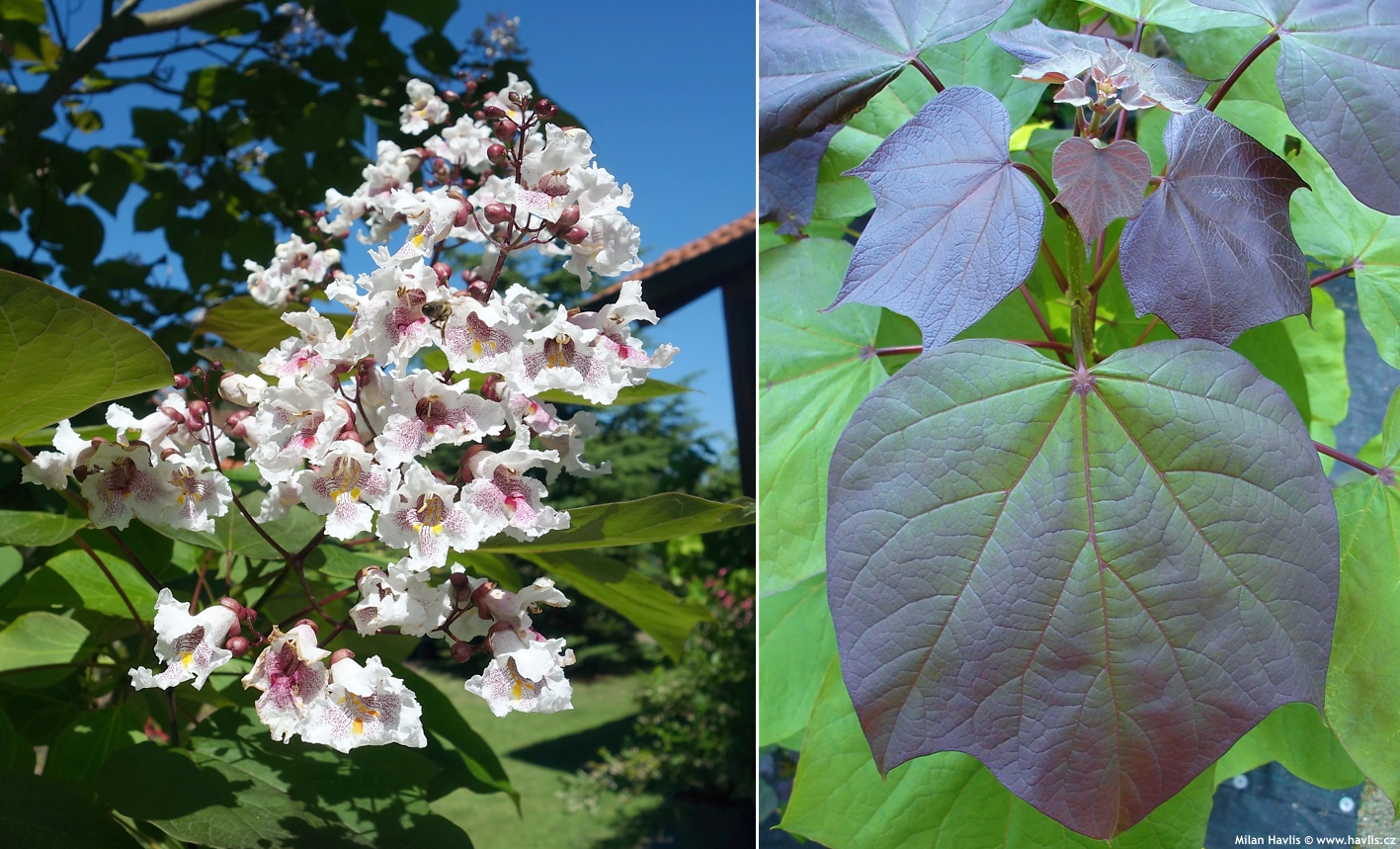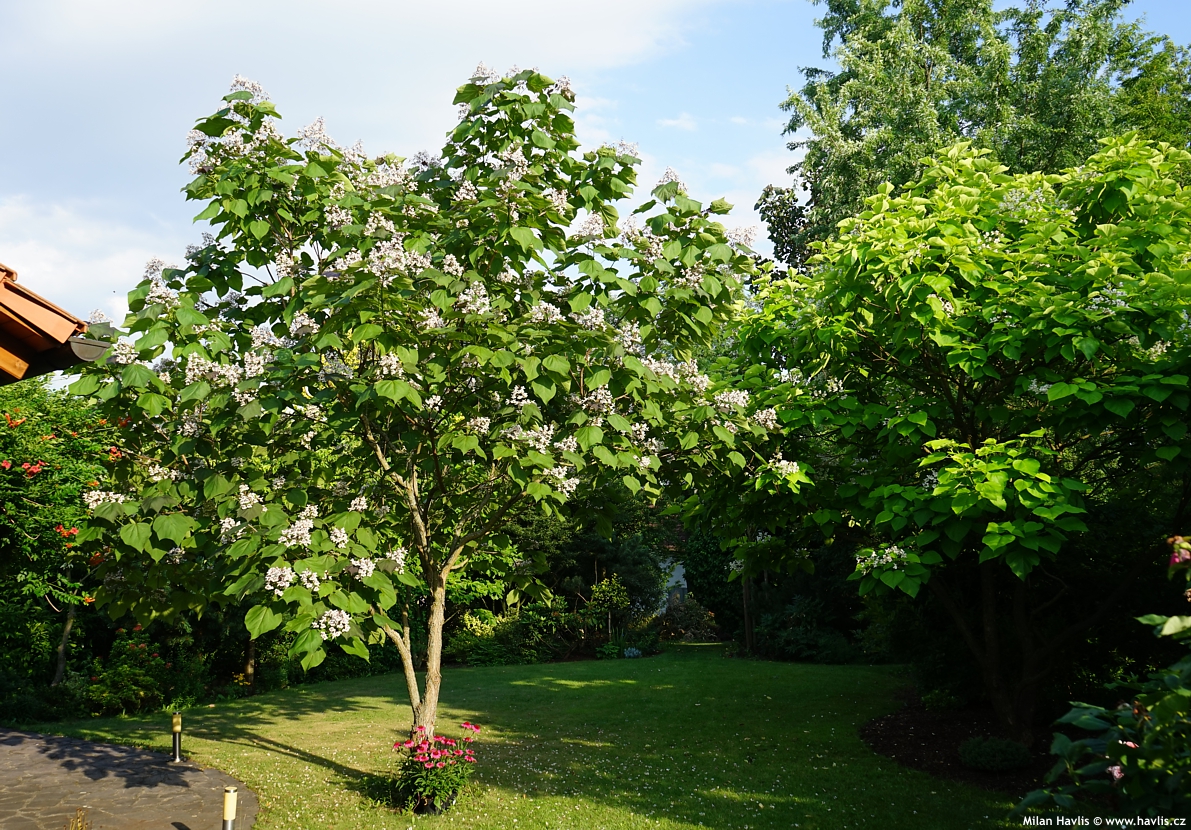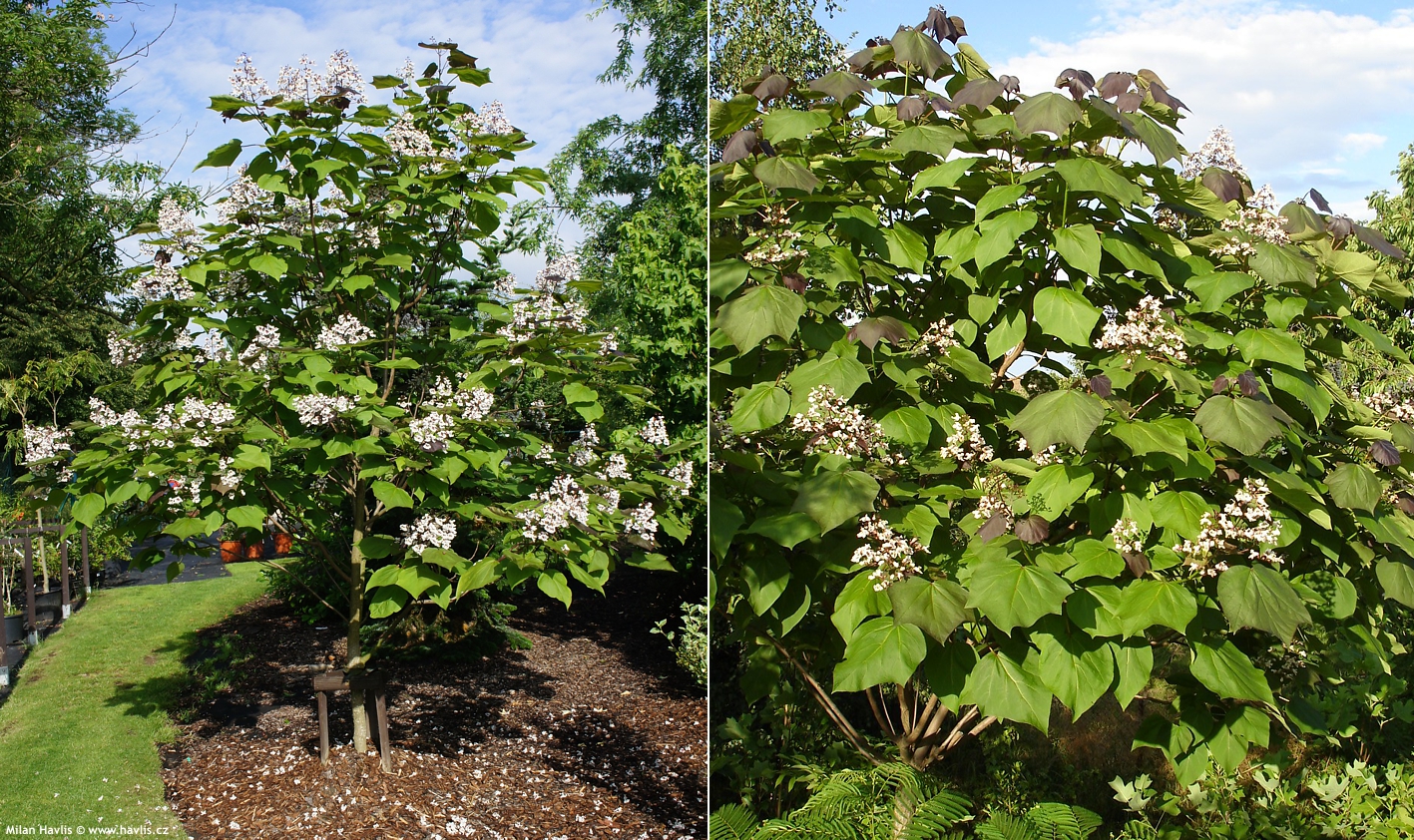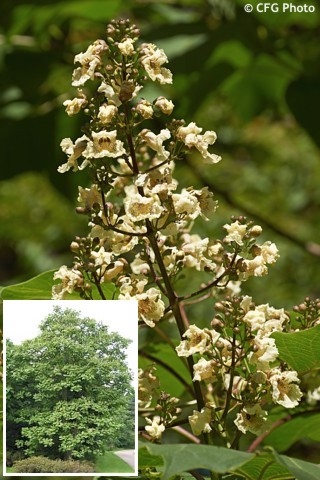Catalpa x erubescens 'PURPUREA' purple Indian Bean Tree
Do you like a tall tree but are afraid it would be too big for your small garden? Well, if you have enough will to prune it every one or two years you can always control its size provided it is not an ash type tree growing about 1 m every year. Thus you can enhance the look of your garden with something extraordinary such as this beautiful catalpa.
Purpurea catalpa has large, nearly tropically looking leaves with an interesting scent that allegedly repels insects. They are deep burgundy red when young and dark green with purple veins during the season. In some locations the deep burgundy colour remains on the whole tree throughout the season. The lyre-shaped leaves are different to other catalpas as they have two more lobes.
Blossoms are formed in upright clusters on purple stalks, they are white with purple spotting and yellow-orange tongues. Seeds are hidden in cigar-shaped, nearly black pods, hanging on the tree until winter.
Just one thing has to be observed: summer mildew. When the weather is warm and wet, usually beginning of summer, the leaves may be affected by mildew infection which is manifested by small grayish white spots that quickly spread throughout the entire leaf. Once you see the spots treat the leaves with a fungicide (with copper content). Otherwise the leaves will remain covered with the mildew film until the autumn.
It grows medium fast or fast. Shrub forms look best as they form its natural wide umbrella shape from the ground. Catalpas benefit from pruning every spring (March/April) to enjoy vigorous foliage from the ground.
Catalpas are not too picky about pH or soil type. However, they will respond well to good, well-drained soil. Our catalpas performed exceptionally well even on clay and withstood temporary water-logging. They do not suffer from air-pollution and adverse conditions. Fully hardy to approx. -28°C (USDA zone 5).
Last update 11-01-2009

505,75 Kè

654,5 Kè

2 907 Kè
Goods are shipped all over Europe. For Russia and U.K. and for further details please read about SHIPPING OPTIONS HERE.
Are you interested in a serious discount for orders NOV-FEB? Check your options here.
THE PRICES INCLUDE VAT of 15%. For quick conversion you can use 1 CZK = approx. 0.04 EUR
- STANDARD QUALITY - Plants of this group are 1st class quality with number of branches and overall density adequate to their size and age, considering they were container grown.
- DE LUXE QUALITY - This label guarantees a luxurious quality of manually selected plants that, compared to their height and age, are exceptionally dense and beautiful.
- EXTRA - These plants are usually mature and bigger specimens with exceptional overall appearance.
- STANDARD (as described in the plant form) means a tree with a trunk of 190-210 cm and a crown at the top, unless specified differently. The commercial size for trees is their girth measured in the height of 1m from ground.
- HOBBY - These plants are of the same quality as our standard-quality plants but younger and therefore cheaper.
- SHRUB - a woody plant with branches growing bushy from the ground level.
- HALF-STANDARD or MINI-STANDARD - a small tree with shorter trunk, its size is usually specified.
- FEATHERED - These are trees with branches growing already from the base of the trunk and up along the stem.
- GRASSES and PERENNIALS - Sizes given usually read the diameter of the pot or the clump, as specified.

































